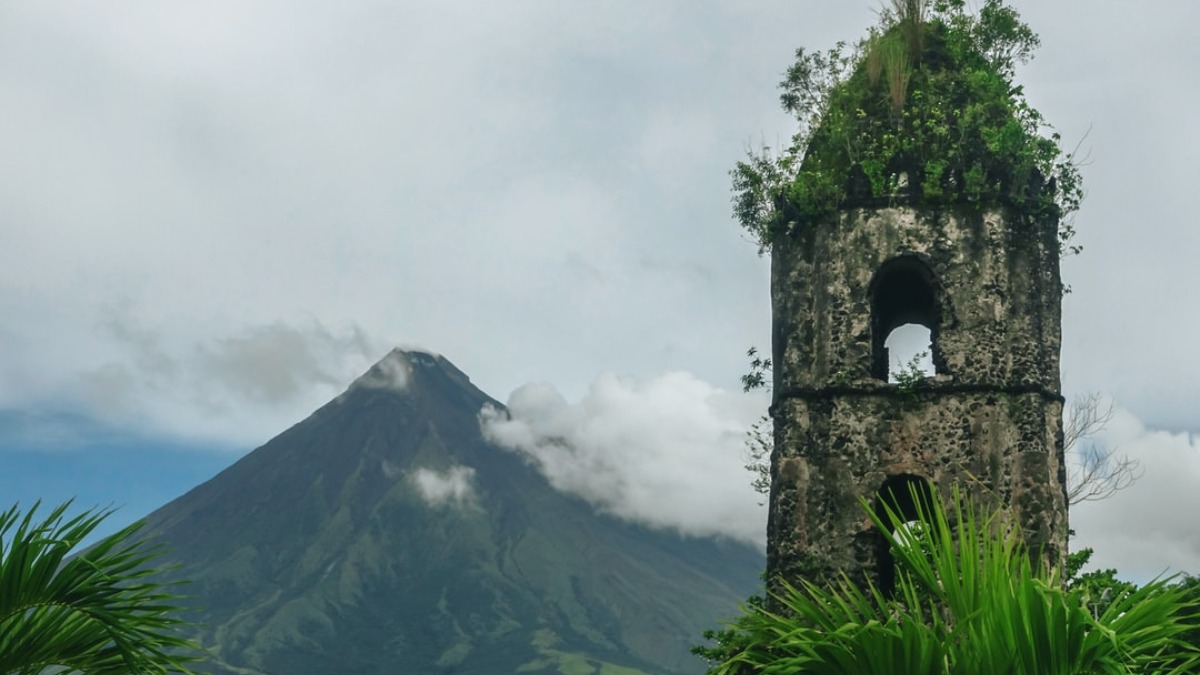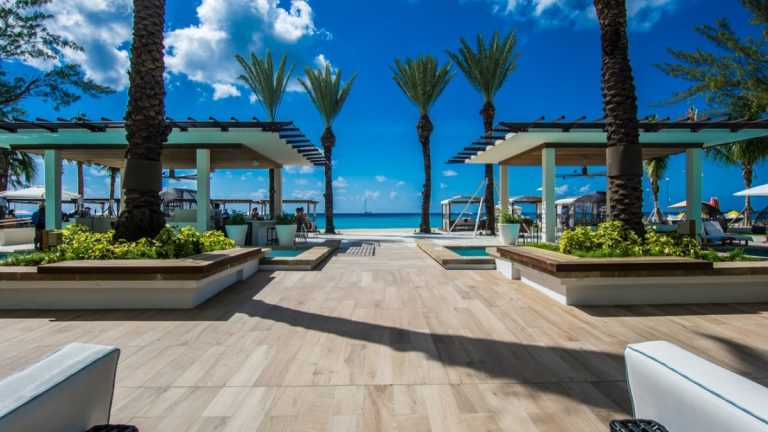The Republic of Guatemala is the home of the Mundo Maya, which includes five nations: Mexico (states of Yucatan, Quintana Roo, Campeche, Chiapas, and Tabasco), Belize, Guatemala, Honduras, and El Salvador.
Know More About My Journey of Belize
Mundo Maya is headquartered in Belize. The captivating and intriguing world of the Mayas is best represented by its bases: – BELIZE. That is my country, which has the fewest people of the five countries that make up the Mayan world known as Mundo Maya in Spanish. I was born near Xunantunich Ruin (formerly Benque Viejo Ruin) and since I was a youngster, I’d walk/run from Benque Viejo with my relatives or pals to see Xunantinich. In Belize, Benque Viejo is the most inexpensive food and housing. Our trip began like this: we took a canoe that is still available in Benque Viejo and crossed the crystal clear Mopan River, which has numerous little waterfalls and divides my Town from the vast region that the Mayas once inhabited, where the magnificent Xunantunich Ruin rests on its highest hill. We walked through previously completed challenges. We bet as a youngster that we would run up hills towards the Mayan ruin after crossing the river. We didn’t take the longer route and go via San Jose Succtoz 1 mile from my home, instead of going straight to the ruin by way of the back entrance, where the dormitory area is located. I believe that after the fall of the Mayas, their descendants continued to migrate north and south between these regions, as is evident by numerous Mayan sites still existing in Benque Viejo and the view of Belize’s Peek of the Highest Maya Ruin from my home.
At the crest of the ruin, you can see Benque Viejo (the westernmost town in Belize) and Melchor de Mencos (a Guatemalan border town) to the Republic of Guatemala, which is located just across from my home. When you stand in the middle at 10 feet away, everything is 360 degrees all around you: You can look up to 10-15 miles where the horizon curves and prevents you from seeing farther. From there, you may go to Caracol Ruin, Belize’s largest ruin, locate about 45 miles south via a road connected to parking. The ruins of Caracol may be reached by car via a two-hour journey with any small four-wheel-drive into Maya Mountain, where you can explore a spectacular rainforest reserve. On the way to Caracol Ruin, stop at a 1,800-foot waterfall midway and explore some huge caverns and natural large rocky areas with river pools where you can unwind and appreciate the rainforest. Caracol was the former capital of Guatemala, and it controlled Tikal ruins for a long time. Both Tikal and Caracol are fully excavated in terms of temples, palaces, shrines, ceremonial platforms, residences, ball courts, terraces, causeways, and plazas. The Mayanists also say that the language of the Chorti is close to Nahuatl, however, it is only spoken in Central America (as distinct from Yucatan Mexico Ruins, where there are additional ruins and Maya Mexicans used to live).
From Xuantunich, it is rumored that there is a tunnel connecting the two sites, allowing them to communicate. To get there, contact Guatemala’s immigration office and tours take you to Tikal Ruin before bringing you back the same day. Interesting is the fact that before you reach “el remate,” where you will cut off to Tikal, you pass through two lagoon: a salty lagoon first and then a sweet lagoon at Macanche. A second lagoon may be seen 1 mile ahead of you on the road to Tikal reserve when you take the junction or cut off to Tikal to your left. This lagoon is huge, and it can transport you by boat to Flores Peten’s Island. Tikal park has a beautiful jungle and wildlife to see. My father used to chop down English mahogany and sapodilla trees here, as well as in Belize. My mother was born in Flores Peten, Guatemala. I used to go here with my father when he drove charter excursions in his car, and I do it occasionally for the sake of my children or to see family. There are many rainforest trees in the park, just like in Belize and Honduras. I believe that you may find everything you need to know about the trees of Mexico in this book. The most important is probably cedar, which is used for many purposes, including making furniture and construction materials. Spanish cedar, sapodilla, chicle (a base for chewing gum), mahogany are but a few examples.
Quirigua ruins in Guatemala
If you want to go further with your study of asphalt roads, you may visit the Quirigua ruins on Guatemala’s side. This is a Mayan archaeological site located near the Atlantic coast of Guatemala in Izabal province, along the lower Motagua River, and includes a ceremonial center. Originally, Essaouira was a major trading center for salt and other commodities. You can still see this today as you travel between its ancient urban centers and municipalities. Many vital trading routes met here historically, and the same may be seen in the region’s contemporary urban communities. From Xunantunich, this would be a 5-hour journey. You may travel to Honduras and see the Copan Ruins from Quirigua. They’re in the western part of the Republic of Honduras, in the Department of Copan. On a day trip, most Guatemalans visit Copan. If you depart from Belize Xunantuncih and want to experience the taste, you’ll need to overnight because vehicles are not permitted to cross the border between Guatemala and Belize after 9:00 p.m. There is also a minor fee of $21 USD per person.
The indigenous Mayans lived in the Joya de Ceren region, a rural area south of San Salvador. The site was covered by volcanic ash for approximately 1,400 years until it was discovered in 1976 and will be discussed further during excavation. The museum houses Mayan relics.
Along the trail to these ruins, there are tiny businesses where Mayan descendants still preserve their culinary traditions, and you may see the plantations of their crops on farms along the road and farther up into Guatemala’s higher mountains on your journey to this country, Honduras, and El Salvador. The abandoned hamlet may still be seen from a distance, particularly because the surrounding terrain is used for farming. Their intensive farming practice in the growth may still be observed up to now on higher mountains.
The cuisine you consume on your road trip to Guatemala, Honduras, and El Salvador is based primarily on maize (corn), beans, squash, avocados, chili peppers, pineapples, and papayas. Mango, guava, orange, ice with syrup, apples, mamey, pineapple, watermelon, and other tropical fruits are now available in their trade. All of these countries offer ceviche as well. The alien grinned as he made a mental note that the spicy sting of fresh lime juice added to dead fish, lobster, conch, and all other types of chopped flesh. Cooked with lime juice and salt. Belize shares several culinary characteristics with Caribbean cuisine pioneered by afro Belizeans from the other islands, as well as Garifunas. It is widely accepted that the Garifunas arrived in the Caribbean islands before Columbus inadvertently landed there. Belize and Honduras have culinary similarities as a result of these intrepid explorers, including rice and beans cooked with coconut flavor and fish soups, among other things. They have further diversified, and technology has now made modern Mayas distinct from their ancient ancestors. If you visit the villages before or afternoon, you may be surprised to discover chocolate drinks with water, corn tortillas, and roast pig or deer. At their home, they prepare a stew of turkey, rabbit, chicken, or duck. They enjoy dogs at their homes as they mine the milpa corn; children and wives are also welcome.
In Belize, 2 hours by a vehicle east of Xunantunich is Altun Ha, which has been well-preserved and contains a big (nearly 10 pounds, or 5 kilograms) piece of jade carved into an image of the head of the Maya sun god that was discovered. The jade head is one of Belize’s most famous national treasures. The Ruin of Cahal Pech, on the slope of a hill overlooking San Ignacio/Santa Elena Town, may be viewed from Xunantunich. The ruin is at the top of a hill, overlooking the Macal River and Mopan River, which join to form the Mopan. To the north is Lamanai Ruin, which is the longest continuously inhabited structure in Mundo Maya. During the Spanish Conquest of Yucatan (Mexico), it followed along like this (North). After the indigenous Mayas launched a rebellion in the colonial period, the Roman Catholic Church of the colony of the conquistadores was destroyed. At the site of Lamanai, there is a large lagoon to the side. El pilar may be seen from the peak of Xunantucih about 3 miles north of Belize’s other Mayan sites at El Pilar. To the north are Cerros and La Milpa, which border Mexico to the north, Lubanntun, and Nim Li Punit, both of which are in the Toledo region where the Mayas now reside in Belize and continue with their agricultural practices as did the Mayas of Guatemala and Honduras.
The distance from Benque Viejo to Yucatan Mexico is 5 hours by land. You’ll go to Quintana Roo Mexico for Yucatan Mexico is the flavor. Chichen Chichi Itza is a wonderful Mayan ruin that you should visit if you’re in the area. On the Spring and Fall equinoxes, the setting sun casts shadows down the steps of the pyramid that appear to be a snake descending. The Tulum ruin, which is also lovely, is the tallest pyramid in the Yucatan Peninsula. The tops of other ruins may be seen rising above the jungle from the top of the pyramid. South of Tulum is approximately 15 more ruins in the direction of Campeche and Chiapas, all with lush tropical forests.
It’s been so enriched that it may be called a once-isolated world culture of this person, who was among the most sophisticated societies in North America before the colonialists arrived. The physical manifestation of Maya temples creates a sense of melancholy admiration. At the same time, when you recognize that barbarous slavery built so many huge pyramids, temples, and sculptures, it generates a feeling of indignation. You’ll notice that they used a method of writing at the boundaries of these temples and relics. They certainly recorded their achievements in mathematics and astronomy, as evidenced by this pattern. Apocalypto is only a glimpse of the devastation wrought by the Mayas… in the remote and dense jungles of temples, you can sense so much servitude labor, sweetness, blood, hunger, and tears of meek Mayas. So much straining is required when cutting and smoothing before laying and stacking stones. The meek are broken on the magnificent side by the placement of stones one upon another to impose a culture of such sophistication.



